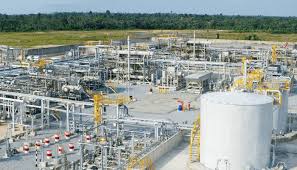By Hosea Parah, Abuja
As Nigeria approaches the first quarter of 2025, its energy sector is gearing up for substantial growth, backed by President Bola Tinubu’s proposed N49.7 trillion budget. A key focus of this budget is the ambitious goal of increasing crude oil production to 2.06 million barrels per day, aimed at bringing down the current inflation rate of 34.6% to a target of 15% within the year.
However, achieving this production goal is not without its challenges. The government faces significant hurdles, particularly regarding security issues in the Niger Delta region, which have historically impacted oil production. To enhance output, Nigeria plans to initiate a new oil licensing round in 2025 that will concentrate on undeveloped oil blocks.
The Nigeria Upstream Petroleum Regulatory Commission (NUPRC) has already begun the process of reclaiming undeveloped blocks from current license holders, which are expected to constitute the majority of licenses available in the upcoming round. For this licensing effort to succeed, a strong political commitment and persistent action from the government will be essential. The 2025 licensing round will prioritize fields that have been discovered but remain undeveloped, along with fallow assets and natural gas development, all in alignment with Nigeria’s pledge to the United Nations Sustainable Development Goals.
In addition, the anticipated Dangote Refinery is set to begin operations in 2025, playing a critical role in reducing Nigeria’s dependency on fuel imports and easing the financial burden of petroleum subsidies. The refinery’s success will, however, rely on a consistent supply of crude oil from the Nigerian National Petroleum Corporation (NNPC) Ltd.
In 2024, Nigeria saw a staggering 60.87% rise in fuel imports, with expenditures reaching N9.17 trillion on Premium Motor Spirit (PMS) from January to September, compared to N5.704 trillion during the same timeframe in 2023.
The gas sector is also poised for growth, driven by the government’s “Decade of Gas” initiative, which aims to increase gas reserves to 210 trillion cubic feet (tcf) by 2025 and 220 tcf by 2030. Nonetheless, gas flaring remains a pressing issue, with a reported loss of $917.3 million (around N1.459 trillion) attributed to 262.1 billion standard cubic feet (SCF) of gas flared between January and November 2024, according to the National Oil Spill Detection and Remediation Agency (NOSDRA).
The government’s initiative will necessitate heightened gas production to meet the increasing demand for gas-powered vehicles and to address power generation shortfalls affecting various industries. Gas exports via Nigeria LNG Limited are projected to remain stable throughout Q1 2025.
In the power sector, plans to expand generation capacity and enhance transmission infrastructure will continue into 2025, with a particular emphasis on boosting the share of renewable energy in Nigeria’s energy landscape. However, the national grid remains susceptible, having experienced 12 collapses in 2024. Experts caution that without stronger mitigation strategies in place, grid instability may persist in the upcoming year.
Addressing labor concerns within the petroleum and electricity sectors will also be crucial for maintaining stability and preventing disruptions.
While Nigeria’s energy sector presents significant potential for growth, it is confronted with a myriad of challenges, including security issues in the Niger Delta, the need to stabilize power transmission, and persistent gas flaring problems. Additionally, the solid minerals sector offers substantial opportunities for revenue generation and job creation, but it will require the government to effectively manage artisanal mining and ensure sustainable sector development.
As Nigeria enters the first quarter of 2025, the success of its energy sector will depend on the effective implementation of strategic policies and initiatives. While promising opportunities for growth lie ahead, overcoming these challenges will be vital to realizing the sector’s full potential and ensuring a stable energy future for the nation

